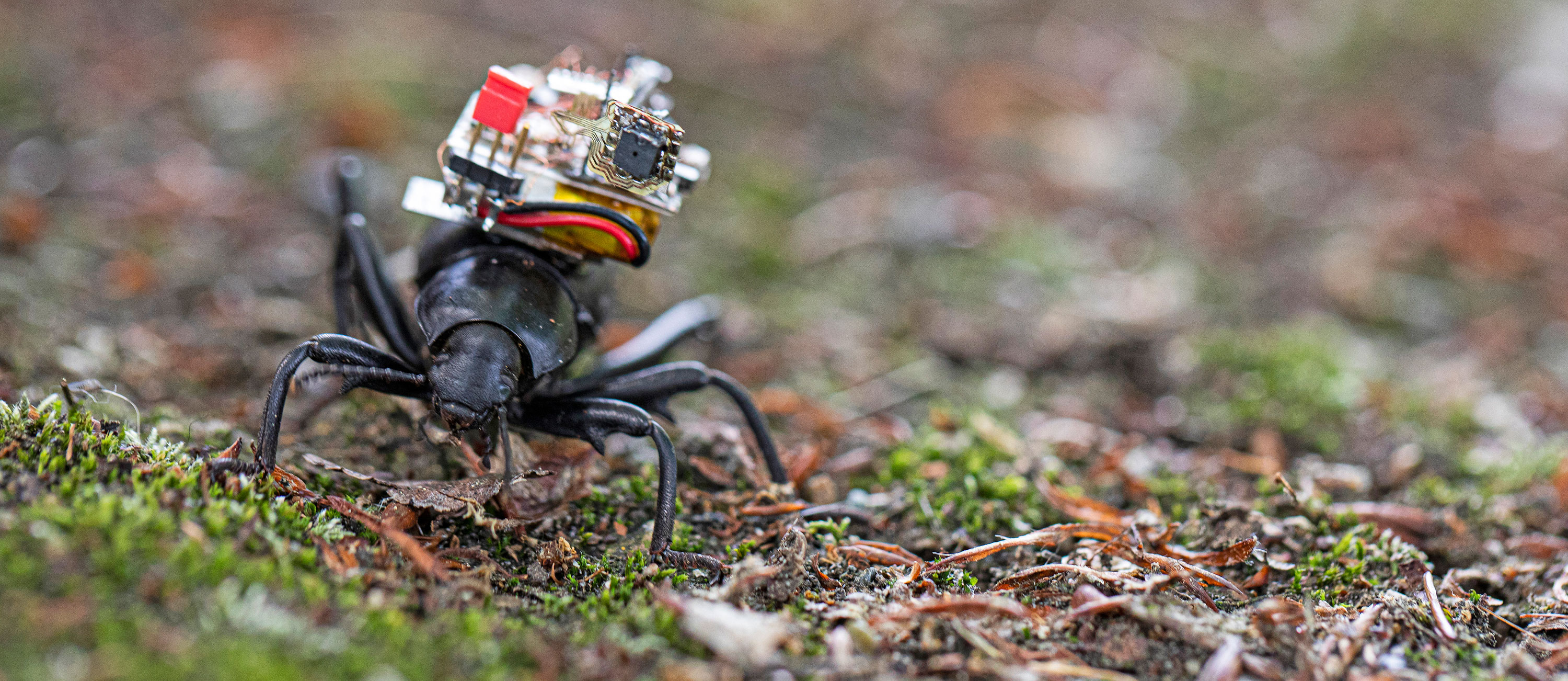Journeys on Beetleback

and navigation, but imaging systems suitable for use on such a small scale are tremendously difficult to realize.”
The group at UW is the first to succeed in building such a camera. Mini-cameras like those found in smartphones consume far too much power to enable wide-angle, high-resolution video images to be captured. While these cameras are very light, the batteries they need are far too large and heavy for an insect or an insect-sized robot to carry about. In their search for a solution to the problem, Gollakotta and colleagues turned to Mother Nature.
“Like cameras, the visual systems of animals are power hungry,” explains Sawyer Fuller, a co-author of the new study. “For example, fly brains consume between 10 and 20% of the animals’ total energy budget at rest.” Most of that energy is devoted to the processing of visual input. “To economize on this expenditure, the animals turn their heads to bring the most salient feature in their visual field – such as prey or a potential mating partner ¬– onto the region of the eye at which their vision is most acute. This consumes less energy than viewing the entire visual field at high resolution.”
In order to mimic the mechanism insects use to image their habitats, the researchers used a tiny black-and-white video camera with an extremely low power consumption rate. The camera is attached to a mobile arm that can be rotated to the same extent as the insect’s head. The arm can be controlled by applying a voltage, which deforms the material such that the camera is brought into the desired position. After each change in the angle of view, the arm remains stationary for about a minute before returning to its initial orientation. This mode of action is reminiscent of how we repeatedly alter the direction of our gaze before returning our light detectors to a ‘neutral’ position.
“The capacity to control the camera in this way is a great advantage, because it gives us a wide-angle view of the scene without consuming much power,” says Vikram Iyer, a PhD student in the group and lead author of the study. “In this way, we can track a moving object without having to expend the energy that would be required to turn the whole robot. The resulting images also have a higher resolution than would be attainable with a wide-angle lens, which produces a grainier image because the same number of pixels is distributed over a much larger area.”
In addition, the engineers incorporated a motion sensor into the instrument, which activates the camera system only when its bearer is on the move. “Only then does the system transmit images,” says Iyer. “If we use the camera without engaging the motion sensor, we can record for 1 to 2 hours before the battery is spent. Use of the sensor enables us to record for 6 hours or more, depending on the beetle’s level of activity.” The insects used in the experiments proved to be cooperative and dependable sherpas, and showed no signs of ‘altitude sickness’.
Iyer et al. actually developed the camera in order to equip the world’s smallest robot with a remotely controllable visual system. Their robot moves about in response to vibrations, and consumes electrical power at a rate comparable to that required to drive the most economical Bluetooth links.
In future versions of the camera, the team hopes to reduce power consumption even further, ideally to levels that would allow them to dispense with batteries and use ambient light instead. “This is the first time we have been able to record video from the back of a freely moving beetle,” says Iyer. “There are so many questions we would love to address – how beetles react to various stimuli that appear within their visual field, for instance.” Furthermore, insects are capable of negotiating rough terrain, a task which robots find extremely challenging. “So the system could also help us to collect recordings made in settings which present navigational difficulties,” Iyer adds.
Original publication:
Vikram Iyer et al.:
Wireless steerable vision for live insects and insect-scale robots
Science Robotics 15 July 2020; Vol. 5, Issue 44, eabb0839
DOI: 10.1126/scirobotics.abb0839













